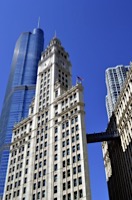
According to The New York Times, big corporations step in to recruit some of the top businesses students when they graduate. How can we expect small business to keep up?
A serial entrepreneur, Andrew Yang, thinks he has the answer. Venture for America, a nonprofit he founded this summer, recruits college seniors to spend two years after graduation at start-ups in struggling cities. For the inaugural class of 2012, he expects to place about 50 fellows at renewable energy, biotech and Internet ventures in Detroit, New Orleans and Providence, R.I.
Venture for America is inspired by Teach for America, the staggeringly popular initiative that places top college grads in low-income schools. Nearly 48,000 applicants, including 12 percent of Ivy League seniors, vied for that program’s 5,200 slots this year, according to its administrators. “They have become one of the most singularly successful talent recruiting organizations in the world,” Mr. Yang said admiringly.
















 Hit 'em young and hit 'em often.
Hit 'em young and hit 'em often.


